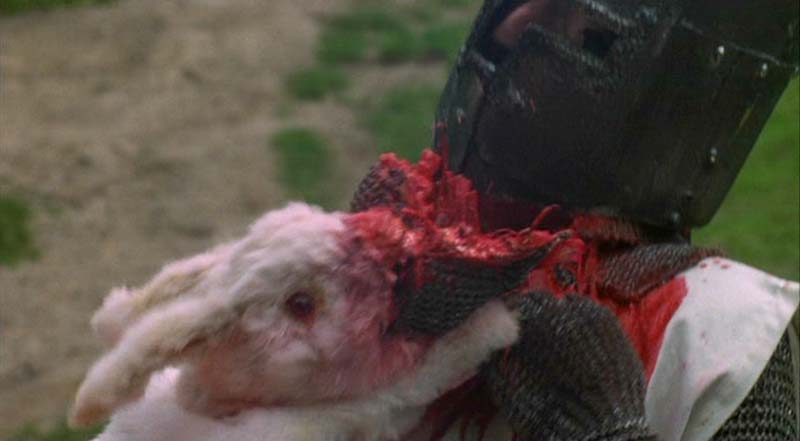Advertising transcends its function as a managerial tool designed to influence consumption and also echoes, reproduces and taps into wider societal themes, values and trends. The debate and study of postmodern influences on marketing and its expression in advertising has gained a late momentum in the mid 1990s(1), though did not reach beyond being a vocal but fringe movement of the mainstream marketing field. With the main stream marketing academia being preoccupied by its largely positivistic (and modernist) outlook; almost unnoticed, expressions of the metamodern have sneaked through the scholastic magnifying glass.
Take the example of the innocent smoothies advertisement, screened late 2009/early 2010.
It features a talking rabbit in a state of self-hypnosis or autosuggestion for the New Year (or even new decade). The obvious question: Why a rabbit? Is it a hint of magic? Like a rabbit out of the hat? Or is the cute rabbit, reminiscent of kitsch Beatrice Potter’s animal stories maybe, just a likable spokesperson? Maybe, the rabbit alludes to other famous rabbits: Brer Rabit, the endearing trickster from the 1940s Disney film “Song of the South”, or Bugs Bunny, the amiable hero of the classic Warner Bros cartoon series. Both rabbits have one common trait: as strength-wise underdogs they triumph using their wits to subvert stronger authority figures and social norms, often using their status as the small, defenseless but nevertheless more intelligent antagonist as a pathway to victory in those fables.
In the advert, just as in the cartoons, the rabbit takes on humanoid characteristics – talking and thinking at least. Naturally, the rabbit is predestined to loose the confronted battles: fighting the wolves or the yearly routine of New Year’s resolutions and failure. In the advert the rabbit goes a step further: it pictures itself running enthusiastically as a way to achieve its target in the quasi-mythical tradition of its famous brethren– and in an satirical twist fails to even do that. Not perturbed by its failure the rabbit focuses fervently on an alternative version of achieving his aims … and through magic, ironically; like a rabbit out of a hat, an innocent smoothie drink appears – offering the easy, witty solution to the hard to achieve target.
Using the form of the fable, the advert negotiates between modernist and postmodernist stances, between tackiness and earnestness, mendaciousness and zest – it at the same time oscillates between ironically self-conscious about fitness and health yet serious about the drinks contribution. With this advert, the company has moved beyond postmodernist ironic and ultimately apathetic expression and gravitates towards a feeling of enthusiasm and euphoria (even more so in their later adverts, see for example the “Savior of the Peckish” adverts). On an aesthetic level, the advertisement negotiated between kitsch imagery and seriousness of context. In a carnivalesque form, it draws the viewer away from the monotony and failures of New Years resolutions to provide solicitously easy answers. Maybe.
1. Brown, S.: Postmodern Marketing. London: Routledge; 1995.
* Image: still taken from Monthy Python’s The Holy Grail.

